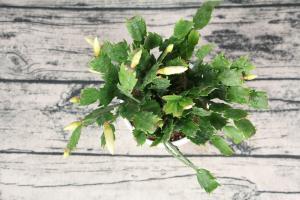Introduction
When we think of plants, we often imagine lush green bushes or blooming flowers, but not all plants look like that. Some plants have hard stems and rough bark, and they are called Woody plants. In this article, we will explore what Woody plants are and their features.
What are Woody plants?
Woody plants are any plants that have hard stems or trunks with bark. Woody plants are different from herbaceous plants, which have soft or green stems and do not produce wood. Trees, shrubs, and woody vines are examples of woody plants. These plants are usually perennial, meaning that they live for more than one growing season, and they store food reserves in their stems and roots.
Features of Woody plants
Woody plants have some distinct features that set them apart from herbaceous plants. Some of these features are:
Stem and trunks: Woody plants have hard stems or trunks that provide support and transport water and nutrients between the roots and leaves.
Bark: Woody plants have bark, which is the outer layer of the stem or trunk. Bark is often rough and can help protect the plant from damage.
Annual rings: Woody plants produce annual growth rings in their trunks, which can show how old the plant is and give clues about its growing conditions.
Leaves: Woody plants often have evergreen leaves that stay on the plant year-round, or deciduous leaves that fall off in the winter.
Roots: Woody plants have extensive root systems that help them absorb water and nutrients from the soil.
Uses of Woody plants
Woody plants have many practical and ornamental uses. Some of these uses are:
Timber: Trees and other woody plants are a source of timber, which can be used for construction, paper, and other products.
Fruit and nuts: Many woody plants produce edible fruit and nuts, such as apples, pears, and almonds.
Shade and shelter: Trees and other woody plants provide shade to cool the environment and shelter for wildlife.
Aesthetics: Woody plants are often used in landscaping and gardening to add beauty and diversity to the environment.
Conclusion
Woody plants are an important part of our natural environment, providing us with many practical and aesthetic benefits. From towering trees to climbing vines, these plants have unique features and uses that make them a valuable resource. Understanding what woody plants are and how they work can help us appreciate their role in the ecosystem and the world around us.

 how many times do yo...
how many times do yo... how many planted tre...
how many planted tre... how many pine trees ...
how many pine trees ... how many pecan trees...
how many pecan trees... how many plants comp...
how many plants comp... how many plants can ...
how many plants can ... how many plants and ...
how many plants and ... how many pepper plan...
how many pepper plan...






























